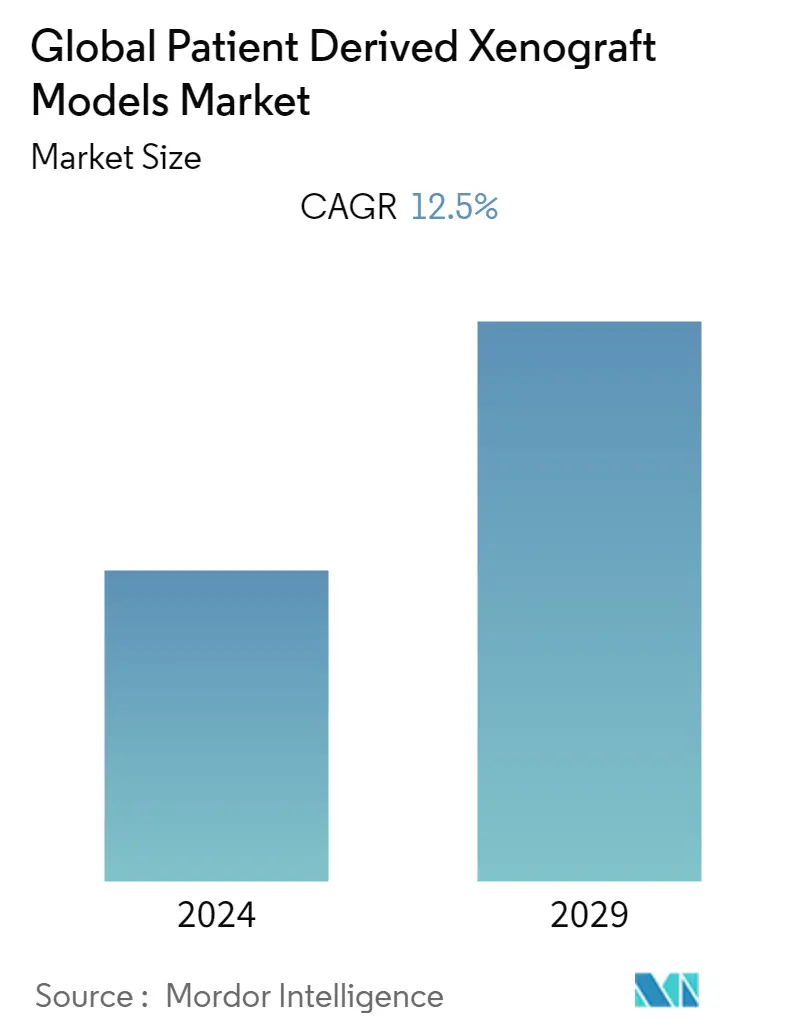Market Size of Global Patient Derived Xenograft Models Industry

| Study Period | 2019 - 2029 |
| Base Year For Estimation | 2023 |
| CAGR | 12.50 % |
| Fastest Growing Market | Asia Pacific |
| Largest Market | North America |
| Market Concentration | High |
Major Players
*Disclaimer: Major Players sorted in no particular order |
Need a report that reflects how COVID-19 has impacted this market and its growth?
Patient Derived Xenograft Models Market Analysis
The patient-derived xenograft models market is expected to register a CAGR of 12.5% over the forecast period.
During the COVID-19 pandemic, cancer research was halted as the majority of studies were focused on developing drugs for COVID-19. However, post-pandemic, the majority of the focus of researchers has been on developing innovative therapies for cancer. This is expected to support the growth of the industry.
The rising cases of cancer, rising research and development activities in the pharmaceutical industry, and continuous support for cancer research from the public, as well as the private sector, are the major factors driving the market growth. For instance, according to the GLOBOCAN Report 2020, globally, around 19,292,789 new cancer cases have been reported, and 9,958,133 reported cancer deaths. The majorly affecting cancers are breast cancer, lung cancer, colorectum cancer, and prostate cancer.
In addition, the increasing research using mouse models for drug discovery for cancer is also anticipated to contribute to market growth. For example, as per the article published in April 2022 by Oncoimmunology, the researchers utilized the Diversity Outbred (DO) and Collaborative Cross (CC) mouse models to investigate the outcomes of the immune checkpoint inhibitors (ICI) for a variety of malignancies. The researchers of the study purchased the DO mice models from the Jackson Laboratory and all CC mice from the Systems Genetics Core Facility at the University of North Carolina. Such adoption of mice models in cancer research is expected to contribute to market growth over the forecast period.
However, the high cost of personalized patient-derived xenograft models and stringent regulations towards the use of animal models are likely to impede market growth over the forecast period.
